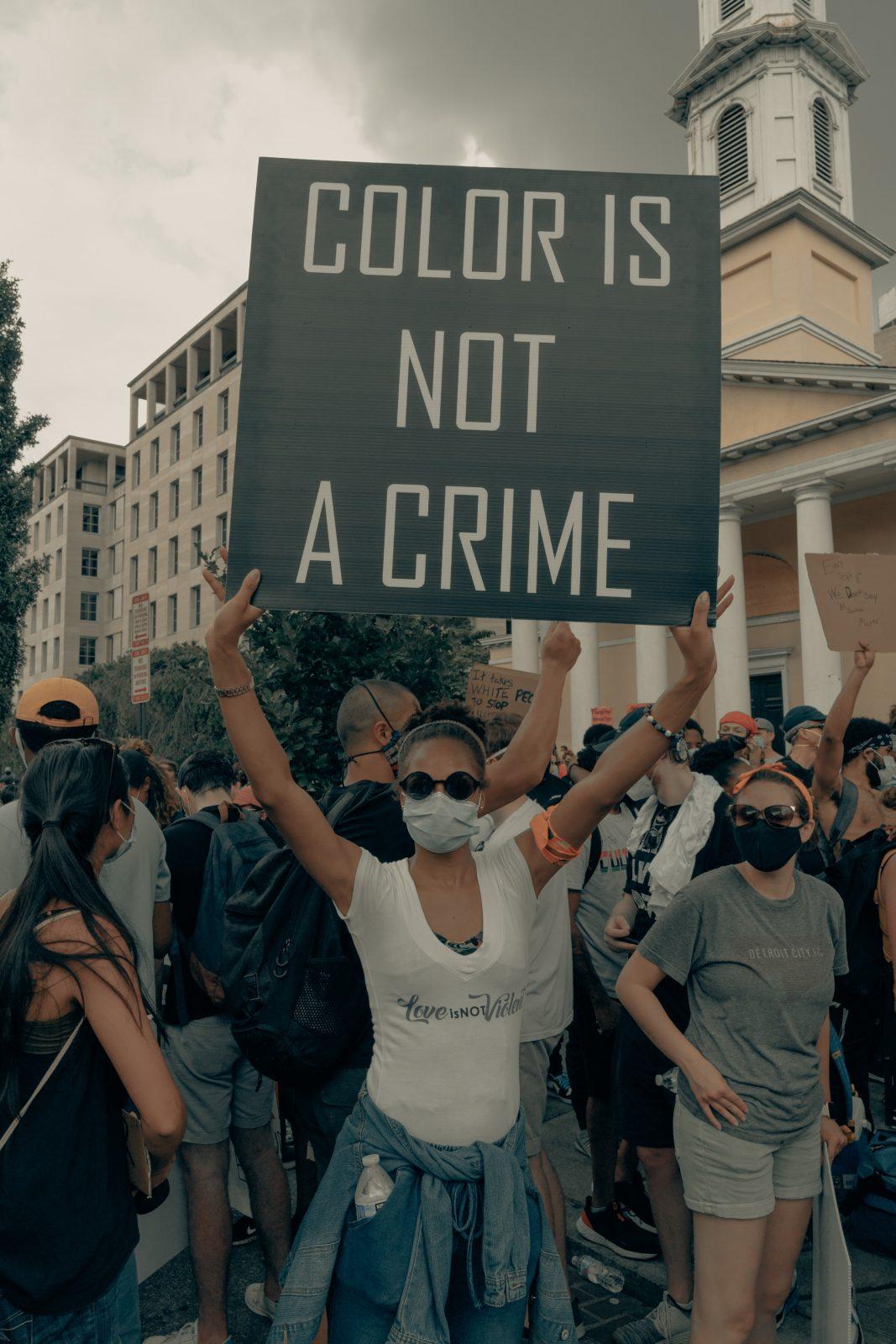The Perpetual Struggle Against Racism

In 1903, Du Bois – an American sociologist and prominent Pan-Africanist civil rights activist – claimed that «The problem of the twentieth century is the problem of the color-line—the relation of the darker to the lighter races of men in Asia and Africa, in America and the islands of the sea». Most colored people were enslaved, lived on colonized territories, or were legally discriminated against as an inferior race at the time he wrote these lines. Consider the situation in the United States. Despite the fact that the United States Declaration of Independence famously states that “all men are created equal and independent, that from the equal creation they derive inherent and inalienable rights, among which are the preservation of life, liberty, and the pursuit of happiness,” Jim Crow laws enforced racial segregation from the end of Reconstruction (1877) to the early days of the civil rights movement in the 1960s.
Such legislation actualized Du Bois’ “color line,” separating “superior” Whites from “inferior” Blacks everywhere: in schools, universities, public transportation, parks, theaters, and even highways. Simultaneously, Plessy v. Ferguson, an important U.S. Supreme Court decision, established the so-called “separate but equal doctrine,” which stated that racial segregation did not violate the U.S. Constitution as long as the facilities for each race were equal. The goal of this segregation was to keep civilized Whites away from former slaves, who were thought to be incapable, barbarous, and ignorant human beings.
The shift started in the 1960s, when, following World War II, Pan-Africanism grew into a massive academic and then political movement. Africans were successful in establishing a new understanding of colonialism and slavery, where they were both interconnected. From this perspective, colonialism deprived nations of the ability to determine their own fate and govern themselves. Even under colonialism, human rights were merely a gift from metropolia that could be easily taken away and restricted. Only people’s self-determination could indeed establish genuine state sovereignty and, as a result, endow people with rights. Furthermore, activists and scholars argued that narratives needed for maintaining white colonialism and slavery were to blame for the African people’s “backwardness”.
All their efforts culminated in 1960 when General Assembly resolution 1514 – «Declaration on the Granting of Independence to Colonial Countries and Peoples» – was adopted without any against votes. Henceforth, «the subjection of peoples to alien subjugation, domination and exploitation constitutes a denial of fundamental human rights, is contrary to the Charter of the United Nations and is an impediment to the promotion of world peace and co-operation», and «Inadequacy of political, economic, social or educational preparedness should never serve as a pretext for delaying independence».
The voice of black people was becoming largely louder as Panafricanism spread and the number of African states in the UN increased. It, in turn, inspired civil rights activism in a number of segregated countries. In the United States, Rosa Parks refused to give up her seat on a public bus to a white man in 1955, sparking a nationwide bus boycott that paved the way for a sustained civic rights movement led by Martin Luther King, who advocated for nonviolent resistance methods. The boycott lasted a year and ended with the Montgomery Improvement Association (MIA) winning a Supreme Court case – buses have since been desegregated. The activists founded the Southern Christian Leadership Conference (SCLC) a year later to support local protestors.
The Greensboro sit-in occurred in 1960, when four Black students in North Carolina sat at the lunch counter, an action permitted only to their white counterparts. Because of the story about this bravery in the local media, the protest expanded and a new organization, the Student Nonviolent Coordinating Committee (SNCC), was formed. Later, in the Spring of 1961, Freedom Riders raised concerns about segregation on interstate buses and bus terminals, eventually forcing the Kennedy Administration to prohibit segregation in interstate travel.
Even though the methods used by the Black civil activists were deliberately nonviolent, they were often under attack by white mobs and arrests. In Birmingham, police tried to stop the antiracist movements violently but the outcome of their actions turned out to be opposite to their goal: images of confrontation between nonviolent protestors and cruel policemen only fueled the antiracist activism.
In August 1963, Martin Luther King gave a historical speech «I have a dream» with a live audience of more than 200 000 people, not to count millions of radio and television public. Due to the activists` efforts and Kennedy`s political will, Jim Crow Era ended in 1964 when the Civil Rights Act was adopted and complemented by the Voting Rights Act of 1965.
That being said, racial segregation persisted in South Africa until 1993. While it was true that Black African groups opposed the apartheid system in their country, they were met with harsh responses from authorities. For example, on March 21, 1960, police killed at least 69 Black Africans during a demonstration in Sharperville. One year after the accident, the Indemnity Act was adopted, allowing police officers to torture and kill in the course of their duties. Alongside this, South Africa was kicked out of the Commonwealth in 1967 due to its apartheid system. Eventually, apartheid was condemned by the United Nations General Assembly in 1973, and South Africa has been subjected to political and economic sanctions since then. South Africa abolished core apartheid laws in 1986 as a result of international pressure, but the society remained deeply segregated in practice. Only the implementation of a fresh constitution enfranchising Blacks in 1993 resulted in a Black majority government led by Nelson Mandela who put an end to the apartheid.
But even so, the claim that «individual courage, as well as government political will and diplomatic condemnation, eliminated racial segregation and apartheid» is unrealistic. Albeit legal restrictions based on race differences were abolished, racial prejudices and discrimination, as well as the entire system of structural racism, persist. In the United States, for example, the infant mortality rate per 1000 live births is 4.7 for White Americans and 11 for African Americans. The proportion of black children living in poverty is three times that of white children. A White family’s median net worth is $171,000, while a Black family’s net worth is $17,150. And black people are killed by police at more than twice the rate of white people. According to a Washington Post analysis of statistical differences between these two groups in America, «Whites live in one America and blacks live in another». That is why, as today’s Black Lives Matter activism demonstrates, the fight against racism is far from over.
Author: Victoria Portnaia
Photo by Clay Banks on Unsplash
Woman holds up sign at the Black Lives Matter protest in Washington DC 6/6/2020 (IG: @clay.banks)

